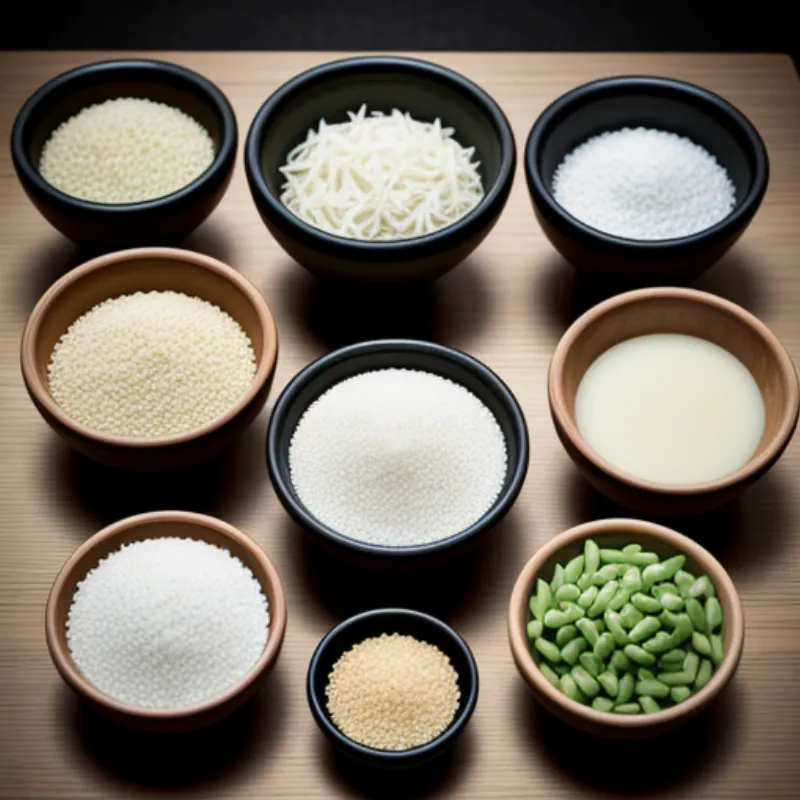Natto sauce, also known as “tare” in Japanese, is a savory and umami-rich condiment that elevates the unique flavor of fermented soybeans (natto). It’s a simple sauce to make at home, allowing you to tailor the taste to your preference – from sweet and savory to spicy and tangy.
Imagine this: you’re sitting down to a steaming bowl of rice topped with creamy natto, a sprinkle of green onions, and a generous drizzle of this homemade sauce. One bite, and you’re transported to a Japanese breakfast table, experiencing the authentic flavors of this traditional dish.
Whether you’re a seasoned natto enthusiast or a curious foodie eager to explore new tastes, this comprehensive guide will equip you with everything you need to master the art of making natto sauce. Get ready to impress your taste buds and add a touch of Japanese culinary flair to your meals!
Unveiling the Ingredients for Your Natto Sauce
The beauty of natto sauce lies in its simplicity. With just a handful of pantry staples, you can create a flavor explosion that complements the unique taste of natto. Here’s what you’ll need:
Essential Ingredients:
- Soy sauce: This forms the base of our sauce, lending its signature savory and umami flavor. Use a good-quality Japanese soy sauce for the best results.
- Mirin: A sweet rice wine that adds a delicate sweetness and a hint of complexity to the sauce.
- Dashi: This Japanese stock enhances the umami depth of the sauce. You can use instant dashi granules or make your own from kombu (kelp) and bonito flakes.
Optional Flavor Enhancers:
- Sugar: A touch of sugar helps to balance the saltiness of the soy sauce and enhance the overall flavor profile.
- Sake: Adding a splash of sake contributes a subtle fruity note and adds depth to the sauce.
- Mustard: For those who enjoy a bit of heat, a touch of Japanese karashi mustard adds a pleasant kick.
Don’t be afraid to experiment! Feel free to adjust the quantities of each ingredient to your liking. Remember, the best natto sauce is the one that perfectly suits your taste buds!
 Natto Sauce Ingredients
Natto Sauce Ingredients
Gathering Your Culinary Tools
Making natto sauce requires minimal equipment. Here’s what you’ll need:
- Small saucepan: To heat and combine the ingredients.
- Whisk: To ensure a smooth and well-combined sauce.
- Storage container: An airtight container to store your homemade natto sauce.
Crafting Your Perfect Natto Sauce: A Step-by-Step Guide
- Combine the ingredients: In your saucepan, combine the soy sauce, mirin, dashi, and any additional flavor enhancers you prefer (sugar, sake, or mustard).
- Gentle heating: Place the saucepan over medium heat and whisk the ingredients constantly until they are well combined and heated through. There’s no need to bring the mixture to a boil.
- Cooling and storing: Remove the saucepan from the heat and allow the sauce to cool completely. Once cooled, transfer the natto sauce to an airtight container and store it in the refrigerator.
Chef’s Tip: For a thicker consistency, you can add a teaspoon of potato starch or cornstarch mixed with a tablespoon of water to the sauce while heating. This will give your natto sauce a slightly syrupy texture.
 Making Natto Sauce
Making Natto Sauce
Serving and Enjoying Your Homemade Natto Sauce
Your homemade natto sauce is ready to elevate your culinary creations! Here are some serving ideas:
- Traditional Delight: Drizzle generously over a bowl of steamed rice topped with natto, chopped green onions, and a sprinkle of sesame seeds for an authentic Japanese breakfast.
- Noodle Sensation: Toss your favorite noodles – udon, soba, or even spaghetti – with natto sauce for a quick and flavorful meal.
- Vegetable Enhancer: Use it as a dipping sauce for fresh or steamed vegetables, adding a burst of umami to every bite.
Storage Tip: Your homemade natto sauce can be stored in the refrigerator for up to 2 weeks.
Frequently Asked Questions about Natto Sauce
Can I make natto sauce without dashi?
While dashi adds a wonderful depth of flavor, you can omit it if needed. The sauce will still be delicious! You can enhance the umami by adding a teaspoon of grated ginger to the mixture while heating.
What can I substitute for mirin?
If you don’t have mirin on hand, you can use a mixture of 1 tablespoon of sake and 1/2 tablespoon of sugar as a substitute.
Is natto sauce gluten-free?
Traditional soy sauce contains gluten. To make a gluten-free version, simply use tamari or a gluten-free soy sauce alternative.
A Final Word from Our Kitchen to Yours
Making your own natto sauce is a rewarding experience that allows you to customize this classic Japanese condiment to your liking.
We encourage you to try this recipe and share your culinary creations! Don’t forget to leave a comment below and tell us about your favorite ways to enjoy natto sauce. Happy cooking!
Interested in exploring more global flavors? Check out our recipe for Cochinita Pibil Sauce, a vibrant and flavorful Mexican condiment that will tantalize your taste buds.
